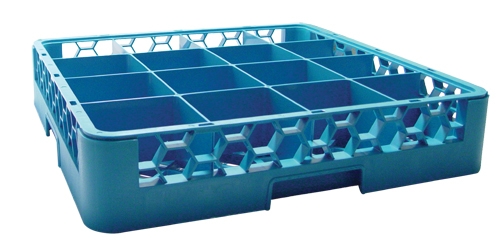Commercial dishwashers are energy hogs, pure and simple. There’s no way to get around it, and the best you can do is try to mitigate the costs associated with dishwashing by employing a few effective strategies.
Wash full racks only. It’s so obvious it almost seems dumb to say, but train your kitchen staff to never, ever, run anything less than a full rack through the dish machine. The temptation to run the dishwasher half full is much greater than you might realize, and it’s a colossal waste of energy.
 Check water temperature. Use a dishwasher thermometer to check the temperature of the water during the rinse cycle on a regular basis. This is especially important for high temp dishwashers, as you want to ensure you are hitting 180 degrees Fahrenheit on every cycle. However, a temp check will also help kitchens with a low temp dishwasher because often the unit runs water that is too hot, and the water temp can be turned down to save energy.
Check water temperature. Use a dishwasher thermometer to check the temperature of the water during the rinse cycle on a regular basis. This is especially important for high temp dishwashers, as you want to ensure you are hitting 180 degrees Fahrenheit on every cycle. However, a temp check will also help kitchens with a low temp dishwasher because often the unit runs water that is too hot, and the water temp can be turned down to save energy.
Booster heaters, internal tank heaters, and commercial water heaters can all be adjusted to optimize water temperature and minimize waste. It’s important to continue checking water temperature as well because over time, use and wear may change the water temp in the dishwasher, requiring further adjustments.
For more information on high temp and low temp dishwashers, check out The Back Burner’s Commercial Dishwashing Buying Guide.
Turn off booster and tank heaters. The booster heater and the internal tank heater on the dishwashing unit should be turned off at the end of the night. Otherwise, they will continue to heat water needlessly while you are shut down, wasting a ton of energy in the process.
Check water pressure. Many larger dish machines have a pressure gauge that indicates the water pressure in the unit. More than 25 Pounds per Square Inch (PSI) could mean you are using more water than necessary, as most dish machines require only 20 PSI. Check with the unit’s manufacturer to see what the optimal PSI is for that machine and to learn how to adjust the PSI.
Optimize conveyor type dish machines. The tradeoff with large conveyor type dish machines is that you can process a lot of dishes quickly, but they are big energy hogs as well. Only fire up the big conveyor during your rush periods when you know you’ll have a lot of dishes to wash. During slow times, it’s much more efficient to use a smaller undercounter or door type dishwasher, as long as you can keep up. The longer you leave the big conveyor shut down, the more energy you’ll save.
When you do need the conveyor dishwasher, make sure you do a couple things to optimize energy use. First, run a conveyor in “auto mode,” which will make sure the electric motor inside the unit only runs when needed. Secondly, install or replace worn door curtain strips. These strips hold heat inside the unit and make it run more efficiently.
Finally, consider using a heat recovery system in your kitchen. A refrigeration heat recovery system takes the heat generated by your refrigeration units and uses it to pre-heat water that goes into your water heater, which means the water heater has less work to do and therefore uses less energy. Another heat recovery system uses heat from used hot water going down the drain to pre-heat hot water heater water. These systems require some up-front cost, but they pay for themselves relatively quickly. If your operation consumes large amounts of hot water, you could save a significant amount of energy by using a heat recovery system.
 Corner Booth Blog | TundraFMP Restaurant Supply, News & Equipment Blog
Corner Booth Blog | TundraFMP Restaurant Supply, News & Equipment Blog




Hi, I’m planning a kitchen for use in a preschool to serve up to 20 children. We’re converting a home for this use. I believe a commercial high-temp dishwasher is best, as child care licensing requires 165 degrees minimum on either wash or dry cycle. As we’re simultaneously attempting to be as green as possible (likely going for a reno LEED certification) I wonder if the heat recovery system (from a fridge) would be suitable to assist with the consumption of a high-temp dishwasher. Your thoughts?
Thanks in advance,
Laila
Hi Laila,
You’ve got me stumped with this one. I’d recommend reaching out to a local consultant with the Reno LEED program to see if they can help make a recommendation for you.
– Paul
Tundra Team